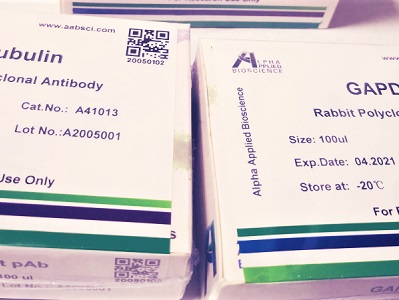

TSLC1 rabbit pAb
Cat :A22955
-
Source
Rabbit
-
Applications
WB,IF,ELISA
-
Reactivity
Human,Mouse
-
Dilution
WB: 1:500 - 1:2000. IF: 1:200 - 1:1000. ELISA: 1:20000. Not yet tested in other applications.
-
Storage
-20°C/1 year
-
Specificity
TSLC1 Polyclonal Antibody detects endogenous levels of TSLC1 protein.
-
Source/Purification
The antibody was affinity-purified from rabbit antiserum by affinity-chromatography using epitope-specific immunogen.
-
Immunogen
The antiserum was produced against synthesized peptide derived from human CADM1. AA range:393-442
-
Uniprot No
Q9BY67
-
Alternative names
CADM1; IGSF4; IGSF4A; NECL2; SYNCAM; TSLC1; Cell adhesion molecule 1; Immunoglobulin superfamily member 4; IgSF4; Nectin-like protein 2; NECL-2; Spermatogenic immunoglobulin superfamily; SgIgSF; Synaptic cell adhesion molecule; SynCAM; Tumo
-
Form
Liquid in PBS containing 50% glycerol, 0.5% BSA and 0.02% sodium azide.
-
Clonality
Polyclonal
-
Isotype
IgG
-
Background
disease:Absent or down-regulated in many advanced cases of NSCLC as well as in many other human cancers, due to gene silencing by promoter methylation.,domain:The cytoplasmic domain appears to play a critical role in proapoptosis and tumor suppressor activity in NSCLC.,function:Mediates homophilic cell-cell adhesion in a Ca(2+)-independent manner. Also mediates heterophilic cell-cell adhesion with CADM3 and PVRL3 in a Ca(2+)-independent manner. Acts as a tumor suppressor in non-small-cell lung cancer (NSCLC) cells. Interaction with CRTAM promotes natural killer (NK) cell cytotoxicity and interferon-gamma (IFN-gamma) secretion by CD8+ cells in vitro as well as NK cell-mediated rejection of tumors expressing CADM3 in vivo. May contribute to the less invasive phenotypes of lepidic growth tumor cells. In mast cells, may mediate attachment to and promote communication with nerves. CADM1, together with MITF, is essential for development and survival of mast cells in vivo. May act as a synaptic cell adhesion molecule that drives synapse assembly. May be involved in neuronal migration, axon growth, pathfinding, and fasciculation on the axons of differentiating neurons. May play diverse roles in the spermatogenesis including in the adhesion of spermatocytes and spermatids to Sertoli cells and for their normal differentiation into mature spermatozoa.,similarity:Belongs to the nectin family.,similarity:Contains 1 Ig-like V-type (immunoglobulin-like) domain.,similarity:Contains 2 Ig-like C2-type (immunoglobulin-like) domains.,subcellular location:Associates with perinuclear and plasma membranes in vivo. Localized to the basolateral plasma membrane of epithelial cells in gall bladder.,subunit:Homodimer. Interacts with CRTAM and EPB41L3/DAL1. The interaction with EPB41L3/DAL1 may act to anchor CADM1 to the actin cytoskeleton. Interacts via its C-terminus with the PDZ domain of MPP3 and the PDZ domain of MPP6.,
-
Other
CADM1, Cell adhesion molecule 1;Immunoglobulin superfamily member 4; IgSF4; Nectin-like protein 2; NECL-2; Spermatogenic immunoglobulin superfamily; SgIgSF; Synaptic cell adhesion molecule; SynCAM; Tumo
-
Mol.Wt (Da)
48509
-
Concentration
1 mg/ml
| Product | Reactivity | Applications | Conjugation | Catalog | Images |
|---|
-
 400-836-3211
400-836-3211
-
 support@aabsci.com
support@aabsci.com
-
β-actin rabbit pAb ...... >
-
β-actin rabbit pAb(A284) ...... >
-
Plant-actin rabbit pAb ...... >
-
β-tubulin mouse mAb(M7) ...... >
-
GAPDH mouse mAb(2B8) ...... >
-
GAPDH mouse mAb(PT0325) ...... >
-
Histone H3 rabbit pAb ...... >
-
Histone H3 rabbit pAb ...... >
-
COX IV mouse mAb(6C8) ...... >
-
GFP-Tag mouse mAb(1G6) ...... >
-
HA-Tag mouse mAb(1B10) ...... >
-
mCherry-Tag mouse mAb(6B3) ...... >










 400-836-3211
400-836-3211
